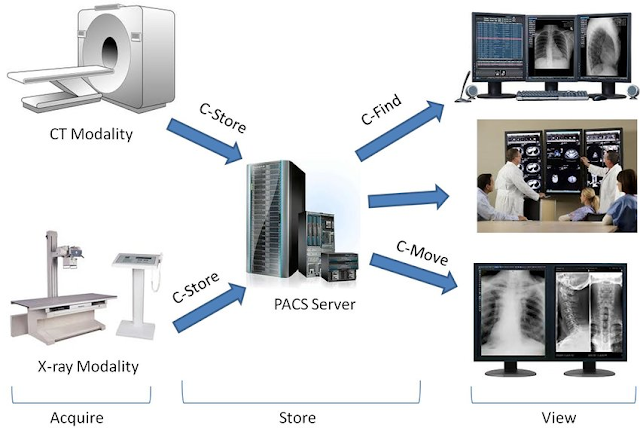How to Keep Sensitive Patient Data Safe on Your PACS Server?
Maintaining PACS server open-source compliance and protecting sensitive patient data is crucial for any healthcare organization.
With the
widespread adoption of open-source PACS servers to store medical images and
records, proper privacy controls are essential.
In this
article, we provide 10 vital tips to configure your open-source PACS server for
optimal patient data protection.
Follow these best practices to avoid data breaches and ensure adherence to healthcare regulations like HIPAA and GDPR.
1. Enable Transport Layer Security (TLS)
Transport
Layer Security (TLS) secures connections to prevent unauthorized access to data
in transit. Mandating TLS across all
connections to your PACS server is vital for encryption and security.
Here's a
simple guide to enabling TLS:
- Obtain a TLS certificate from a trusted
Certificate Authority
- Install the certificate on your PACS
server
- Enable TLS on incoming network ports like
80 and 443
- Configure PACS workstations and imaging
modalities to use TLS
2. Restrict Network Access
Limiting
network availability for your PACS server reduces external entry points that could expose patient data. We suggest
these access controls:
● Allow only specific IP ranges to connect
● Configure internal firewall rules to block
unused ports
● Disable ICMP pings to make discovery harder
● Use VPN for external connections instead of
open ports
3. Implement Strong Authentication
Secure sign-on
processes prevent unauthorized usage
that could lead to breaches:
● Enforce complex passwords changed every 90
days
● Configure two-factor or multi-factor
authentication
● Maintain a user access control list
● Promptly deactivate ex-employee credentials
4. Log Significant System Events
Comprehensive
activity logging provides an audit trail
showing how your PACS system processes and protects health data.
● Record login attempts
● Track file accesses and permission changes
● Monitor user actions within applications
● Archive logs externally in read-only format
5. Encrypt Data Storage Volumes
Since
PACS servers store protected health information (PHI), encrypting your data volumes adds another layer of security.
We recommend using an enterprise-grade encryption solution supporting AES-256 or above. This converts data to coded form, only allowing access using encryption keys.
|
Solution |
Details |
|
VeraCrypt |
Free
\ open source tool for creating encrypted volumes |
|
BitLocker |
Windows
built-in volume encryption |
|
LUKS |
Standard
for Linux distributions |
6. Harden the Operating System
Optimizing
OS-level configurations enhances security:
● Blacklist unnecessary software
● Remove deprecated communication protocols
● Limit user shell access to prevent exploits
● Automate security patches and updates
7. Phase out Legacy Software
Migrating
from outdated PACS applications reduces vulnerabilities:
● Legacy apps sometimes lack encryption or TLS
● Difficult to update old platforms
● New software adheres to modern protocols
● Avoid end-of-life systems with expiring support
8. Compartmentalize System Functions
Separating
PACS functions across distinct systems limits damage from compromises:
● Isolate database servers
● Maintain different web frontends
● Split image archives by facility or year
● Restrict connectivity through ACLs
9. Develop Incident Response Plans
Despite
best efforts, breaches can still occur. Preparation
shortens recovery time:
● Document processes for various scenarios
● Train staff to swiftly identify and isolate
threats
● Maintain emergency contacts for reporting
violations
● Know required timeframes for notifications
10. Perform Third-Party Risk Assessments
External
vendors like cloud storage or analytics providers may access your PACS.
Confirming their security helps protect patient data in their systems.
● Review their architectural diagrams and
dataflow
● Verify encryption, access controls, and
logging
● Update terms in contracts or agreements
● Conduct periodic audits of partners





Comments
Post a Comment